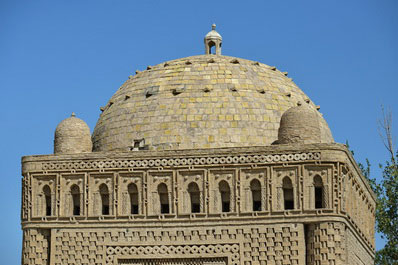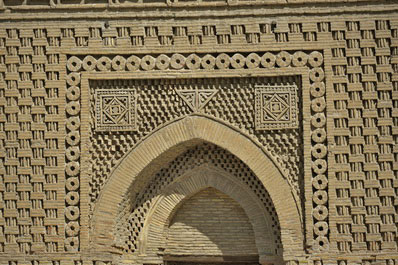Samanid Mausoleum, Bukhara

The Samanid Mausoleum in Bukhara is one of the oldest historical monuments in Central Asia. Serving as the family burial place of the rulers of the Iranian Samanid dynasty, it marks the era of the Samanid Emirate, which lasted from 875 to 999 A.D. This empire spanned modern-day Uzbekistan, Tajikistan, Turkmenistan, Iran, Kazakhstan, and Afghanistan, significantly contributing to the development of science and culture in its time.
Built at the turn of the 9th and 10th centuries, the mausoleum has remarkably withstood the test of time, remaining the only monument from the Samanid Empire era. This grand structure was constructed over the tomb of Ahmad ibn Asad by his son Ismail Samani, the first ruler of the united Samanid emirate. Under Ismail's reign, the previously divided state lands merged into a powerful, unified country. Ismail Samani, like his father, is also buried in the mausoleum.
In its prime, the area around this beautiful structure included a small necropolis where notable figures of the state were interred. Unfortunately, these graves were destroyed in the first half of the 20th century, leaving no trace today.
Architecture of the Mausoleum
The mausoleum is crafted entirely from burnt brick, adorned with decorative carved ganch ornaments. Its design and construction highlight the advanced architectural techniques of its time. The structure features a square base transitioning to a spherical dome through angular trompe l'oeil, an engineering feat known in Central Asia since pre-Arabic times. A hollow gallery runs along the top, with small lancet windows creating a diffuse lighting effect inside.
All four facades of the mausoleum are identical, each featuring large lancet arches framed by robust brick columns at the corners. The arched entrances have geometric compositions with squares, equilateral rhombuses, and circles, embodying a cosmogram similar to Buddhist mandalas. This patterned brickwork on both the interior and exterior walls creates a rich texture of light and shadow, giving the structure an airy lightness.
The Samanid Mausoleum is considered one of the most stately and monumental creations of Central Asian architecture, a true masterpiece of medieval design. Located in Bukhara's Central Park of Culture and Recreation, it is within walking distance of many other cultural heritage sites in Uzbekistan, including Talipach Gate, Kosh Medrese, Ark Fortress, Chashma-Ayub Mausoleum, and other medieval architectural marvels.



